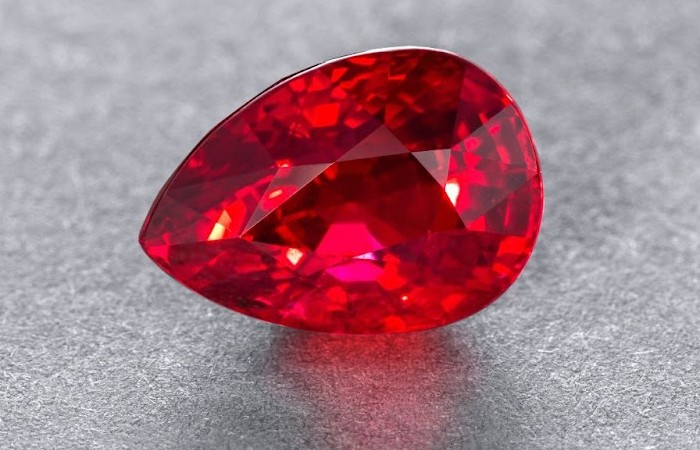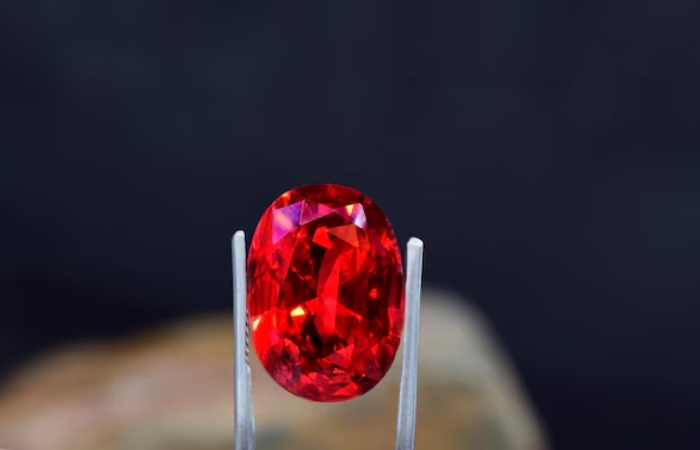The world of gemstones is a fascinating realm filled with splendor and wonder. Among these natural wonders stands out the “Red Rube” as a stone of exceptional beauty and importance. Although less known than other red gemstones such as rubies or garnets, Red Rube offers unique attributes and a fascinating history.
In this article, we will delve into the intricacies of Red Rube, exploring its physical characteristics, origins, historical significance, cultural impact, and modern applications Red Rube.
Physical Characteristics (Red Rube)

1. Composition and Structure
Red ruby is a variety of gemstones distinguished by its bright red hue. Unlike rubies, primarily composed of corundum, red ruby can vary but often comprises a mixture of minerals such as spinel, garnet, or even synthetic elements—the red color of the stone results from the attendance of trace elements such as chromium or iron.
- Color: The color of red ruby ranges from a deep purple to a lighter, more vibrant red. The strength of the color can vary depending on the specific mineral composition and the presence of impurities.
- Clarity: High-quality red rubies are known for their clarity. However, inclusions may sometimes be present, adding to the unique character of each stone.
- Hardness: The hardness of red ruby depends on its mineral composition. For example, spinel has a hardness of 8 on the Mohs scale, creation it durable enough for various uses.
2. Optical Properties
Red ruby exhibits fascinating optical properties, including its brilliance and luster. Cutting and polishing the stone can significantly influence its overall appearance, enhancing its natural beauty.
Brilliance: Due to its high refractive index, red ruby can exhibit exceptional brilliance, making it a popular choice for jewelry.
Brilliance: Red ruby’s brilliance ranges from vitreous to adamantine, depending on the stone’s surface condition.
Origins and Formation
1. Geological Formation
The formation of red rubies involves complex geological processes. These stones are typically found in metamorphic rocks, where high pressure and temperature conditions lead to the formation of gem-quality minerals Red Rube. Specific formation conditions can vary depending on the mineral composition of the red ruby.
- Metamorphism: Red rubies are more likely to form in areas where metamorphic processes are prevalent, such as parts of Myanmar or Sri Lanka. These areas provide ideal conditions for the minerals to crystallize and develop a bright red color.
- Deposits: Large deposits of red rubies have been discovered in various parts of the world. Each location contributes unique characteristics to the stones mined there.
2. Major Sources
Red rubies have been discovered in several locations around the world. Some of the most notable sources include:
Myanmar: Known for producing high-quality rubies, Myanmar is also a significant source of red rubies. The region’s geological conditions are ideal for forming these stones Red Rube.
Sri Lanka: Another primary source of red rubies, Sri Lanka’s gemstone deposits are renowned for their clarity and color.
Thailand: Thai deposits offer a variety of red rubies with unique hues and qualities that differ from those found in other regions.
Historical Significance
1. Ancient Uses
Throughout history, gemstones have held significant cultural and symbolic value Red Rube. The red ruby is no exception. Ancient civilizations valued red stones for their beauty and believed they possessed magical properties.
Mythology: In many ancient cultures, red gemstones were associated with passion, power, and protection. They were often used as religious and ceremonial objects.
Historical Records: Ancient texts and archaeological finds suggest that red rubies were valued by royalty and nobility. Their use in crowns, scepters, and other regalia indicates their esteemed status.
2. Symbolism and Beliefs
The red ruby has been imbued with various symbolic meanings throughout history.
Passion and Courage: The bright red color of the red ruby symbolizes passion, courage, and strength. This symbolism is reflected in its use in personal adornments and ceremonial objects.
Protection: In some cultures, red gemstones were believed to defend against evil forces and bring good luck to the wearer.
Cultural Impact

1. Red Rube in Jewelry
Red ruby has a significant presence in the jewelry world. Its vibrant color and brilliance make it a popular choice for different decorations.
Engagement Rings: Red ruby is often used in engagement rings and other high-value jewelry due to its vibrant hue and durability Red Rube.
Custom Designs: Jewelers frequently use red ruby to create unique, custom designs. The stone’s color and clarity allow for many creative possibilities.
2. Artistic and Decorative Uses
Beyond jewelry, red ruby has found applications in various artistic and decorative contexts.
Artwork: Red rubies, including sculptures and inlays, are sometimes used in artwork to add a touch of luxury and color.
Decorative items: High-quality red rubies are incorporated into decorative items such as watch dials, pens, and other luxury items.
Modern Applications
1. Synthetic Red Rubes
Technological growth has led to the creation of synthetic red stones, which mimic the appearance of natural stones but can be produced more consistently and at a lower cost Red Rube.
Manufacturing techniques: Synthetic red stones are created using flame casting or hydrothermal growth techniques. These methods allow for the production of stones with controlled properties Red Rube.
Applications: Synthetic red stones are used in various applications, including fashion jewelry and industrial settings, where high-quality natural rocks can be prohibitively expensive.
2. Market Trends
Demand for red rubies has fluctuated according to market trends and economic conditions.
Collectibility: As collectors and enthusiasts seek out rare and unique gemstones, red rubies have gained popularity as collectibles.
Investment Value: High-quality red rubies are considered valuable investments, and their prices are influenced by color, clarity, and rarity Red Rube.
Care and Maintenance

1. Cleaning and Storage
Proper care is essential to upholding the beauty and longevity of Red Rubes.
Cleaning: Red Rubes can be cleaned with mild soap and water. Using a soft brush to eliminate dirt and avoid harsh chemicals that may injure the stone is advisable.
Storage: To avoid scratches and damage, Red Rubes should be stored separately from other jewelry. A soft bag or lined jewelry box is ideal for storing them Red Rube.
2. Professional Assessment
For older or valuable red rubies, a professional appraisal is recommended to ensure the authenticity and value of the stone.
Conclusion
Red ruby is a gemstone of extraordinary beauty and significance. Its captivating colors, rich history, and diverse applications make it a fascinating subject. From its geological formation to its cultural impact, red ruby embodies a combination of natural wonder and human artistry.
Whether appreciated for its symbolic meanings, used in exquisite jewelry, or prized as a collectible. Red ruby continues to shine as a symbol of elegance and luxury. As we continue to explore the world of gemstones, red ruby remains a testament to the enduring appeal of nature’s most precious creations.


